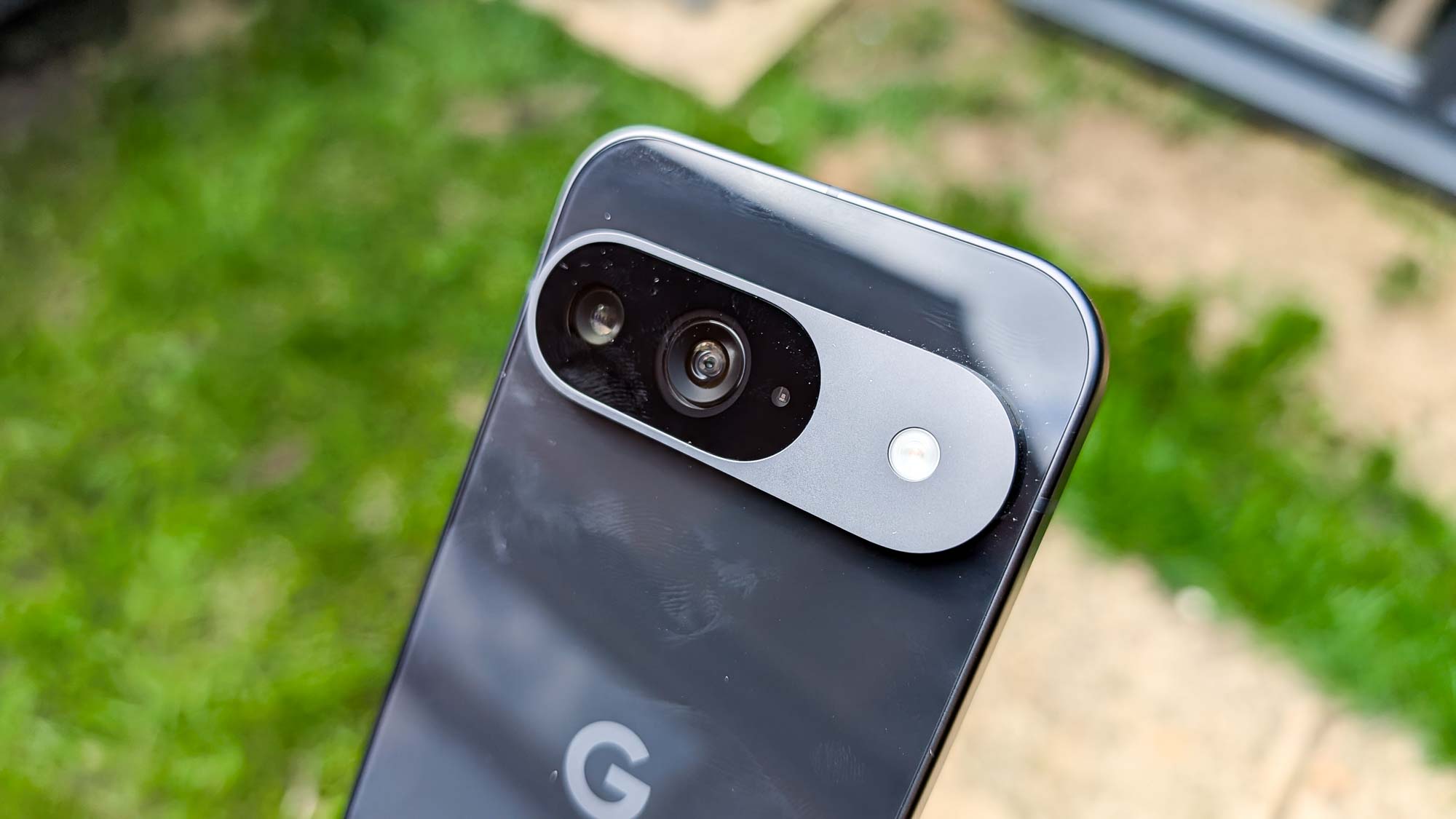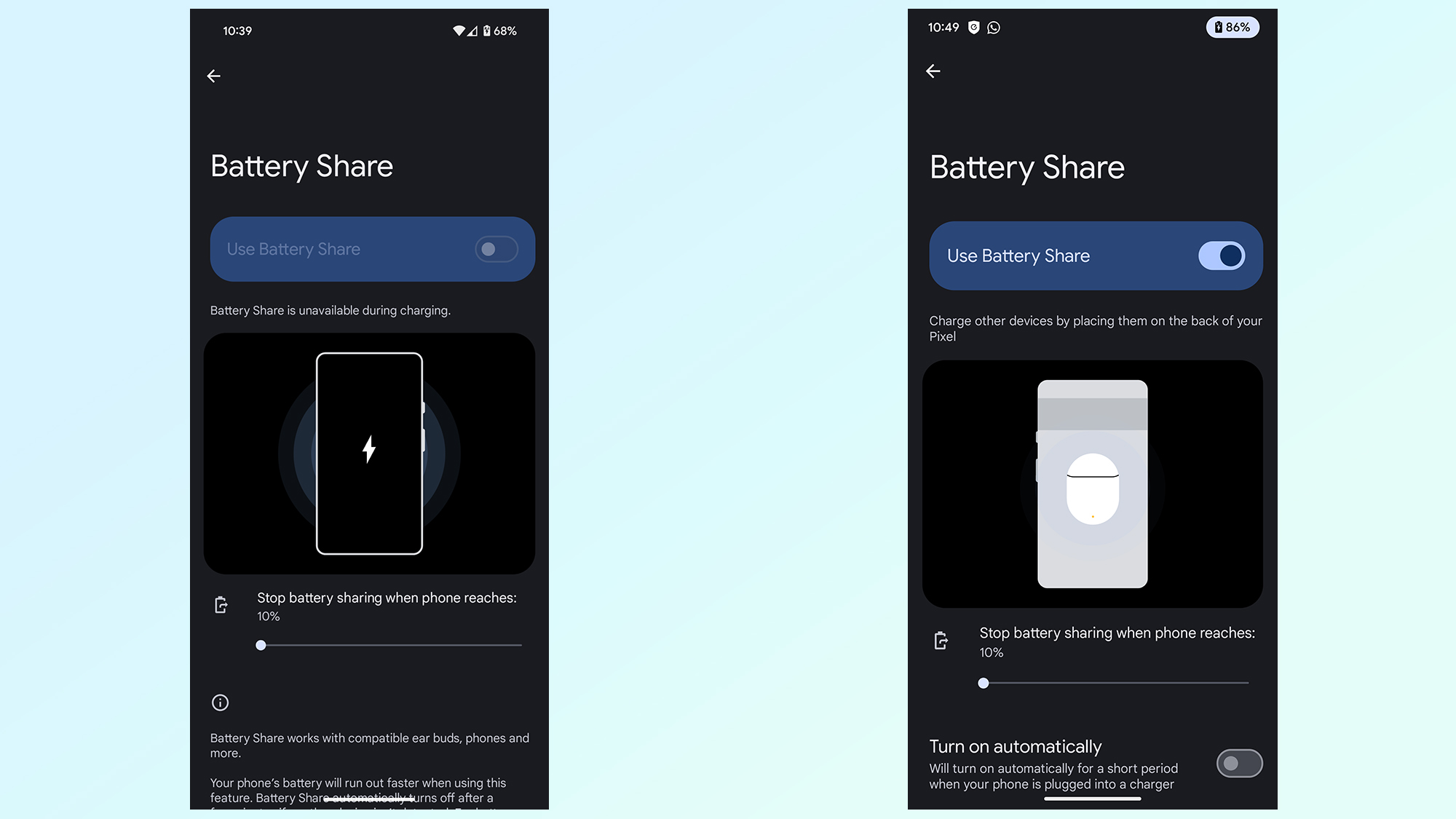
One of the most convenient features on modern phones is reverse wireless charging. That way you can wireless charge other devices, such as earbuds cases or every other phone, if there’s no other power source available. The Google Pixel 9 also has a version of this called Battery Share, but there’s one key difference compared to older Pixel models.
The problem with reverse wireless charging is that all the power you share has to come out of your phone’s battery. Which isn’t always ideal. Older Pixels allowed you to mitigate this problem by letting you share power while your phone was plugged in. Which was good if you had a USB-C charger but needed to charge a device that didn’t support it. Like an iPhone, or a wearable. But that’s no longer possible with the Pixel 9.
If you head to the Battery Share menu in the Pixel 9’s settings, you’ll find that turning the feature on is as easy as ever. But as soon as you plug a charging cable into your phone the feature will automatically switch off — displaying the message “Battery Share is unable during charging”.

If the charging cable is already plugged in when you enter the menu, you’ll see the Battery Share toggle has been grayed out and displays the same message. Naturally Battery Share isn’t available if you’re already wireless charging, because you can’t reverse wireless charge if the coils are already in use.
Google hasn’t said why this change has happened with the Pixel 9, but it’s possible that it could be down to long term battery preservation. Wireless charging already generates a fair bit of excess heat, and I found the Pixel 9 Pro gets quite a bit hotter than I’d like it to be. Wired charging can also generate heat, especially at high speeds, and doubling up on heat generation isn’t very good for the phone as a whole — let alone the battery, which is already sensitive to extreme temperature changes.
Plus, these days it’s rare to find a power-hungry wireless charging-capable device that doesn’t already support USB-C charging. Smartwatches or wireless earbuds are what you’re more likely to need to charge, and they don’t have huge batteries. So offering them some power isn’t going to make a huge dent in your battery life.
If any of your friends with an iPhone 14 or older finds themselves out of power, they may well be out of luck. They probably should have planned ahead a bit better.







